The U.S. Mint introduced the Washington quarter in 1932, originally intended as a one-time issuance to commemorate George Washington’s 200th birthday. However, due to its popularity, the series continued and has now become one of the longest-running coin series in American history.
Determining the value of a 1960 quarter requires expert appraisal since even the slightest variation in the design can have a significant impact on the coin’s value. Additionally, there are certain error coins from this period that are highly valuable. Let’s delve into the details.
Value Chart for 1960 Quarters
| Condition | 1960 Quarter | 1960 D Quarter |
|---|---|---|
| Good | $6 | $6 |
| Very good | $6 | $6 |
| Fine | $6 | $6 |
| Very fine | $6 | $6 |
| Extra fine | $6 | $6 |
| AU | $7 | $7 |
| MS 60 | $10 | $10 |
| MS 65 | $30 | $30 |
| PR 65 | $18 | – |
History of the 1960 Washington Quarter
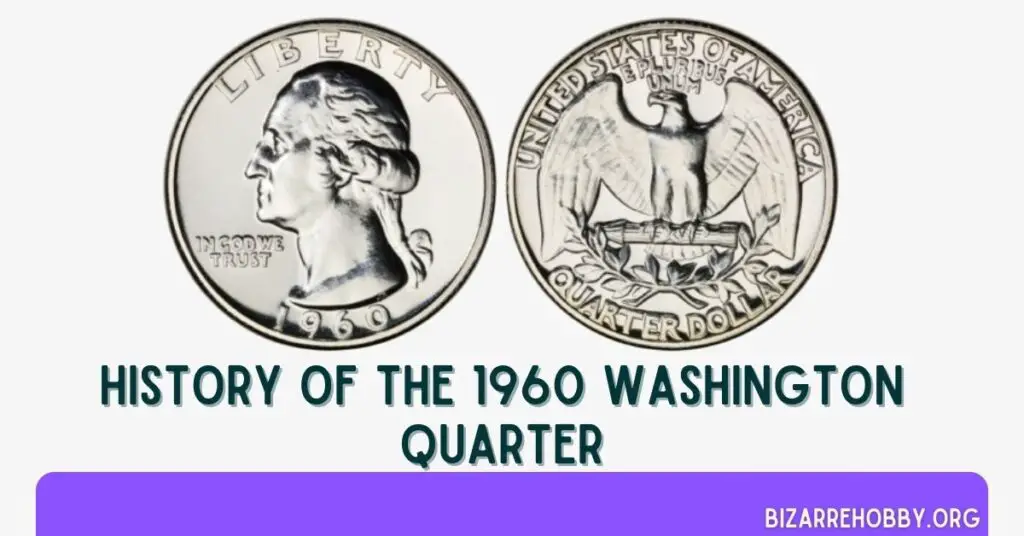
The story of American silver quarters dates back to 1796, with the introduction of the Draped Bust quarters. Before the Washington quarter, the U.S. Mint released five primary types of quarters, including the Standing Liberty quarter, which the Washington quarter eventually replaced.
The Washington quarter, which is still in circulation today, was the second coin to feature a historic figure on the obverse, following the introduction of the Lincoln penny in 1909. The coin was initially intended to be minted only in 1932, marking the bicentennial of Washington’s birth. However, the design by John Flanagan, which was favored over Mrs. Fraser’s design by the then-Treasury Secretary, became so iconic that it was continued indefinitely.
The 1960 quarter was among the last to be minted with 90% silver content, as the composition changed in 1965 when the rising value of silver led to the introduction of cupronickel coins.
In 1960, only two U.S. mints produced the Washington quarter, and these coins can still be found in a range of conditions today. However, quarters in gem condition are rare. This rarity is due to the practice in the 1960s of selling bags of Brilliant Uncirculated quarters as investment products.
Unfortunately, these coins often suffered from scratches, known as “bag marks,” due to contact with each other, making flawless examples particularly valuable to collectors.
Types of 1960 Washington Quarters
| Location | Year | Minted |
|---|---|---|
| Philadelphia | 1960 quarter | 29,164,000 |
| Denver | 1960 D quarter | 63,000,324 |
| Philadelphia | 1960 proof quarter | 1,691,602 |
| Total | / | 93,855,926 |
Features of the 1960 Washington Quarter
The Washington quarter was first introduced by the U.S. Mint in 1932, just three years into the Great Depression. Despite the economic hardships of the time, the coin was created to honor the 200th anniversary of George Washington’s birth, providing Americans with a fitting tribute to their first President.
Initially, the plan was to release a limited-edition coin for this occasion, but the Washington quarter was so well-received that it became a regular part of U.S. coinage after a brief pause in production.
Obverse Design of 1960 Quarter
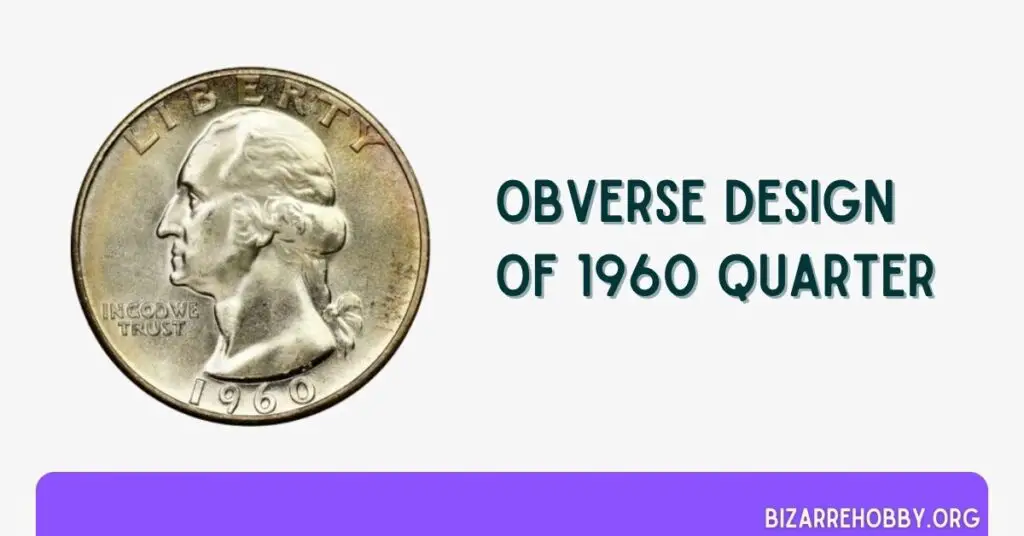
The obverse (front) of the 1960 Washington quarter features a profile of George Washington, paying tribute to his leadership as the nation’s first President from April 30, 1789, to 1797. This iconic design was crafted by John Flanagan and has been a staple of American coinage ever since.
The obverse design includes several inscriptions: “IN GOD WE TRUST” to the left of Washington’s profile, “LIBERTY” across the top, and the year “1960” directly below his bust. Additionally, you’ll find the initials “JF” on the neck truncation, subtly representing the artist’s signature.
Reverse Design of 1960 Quarter
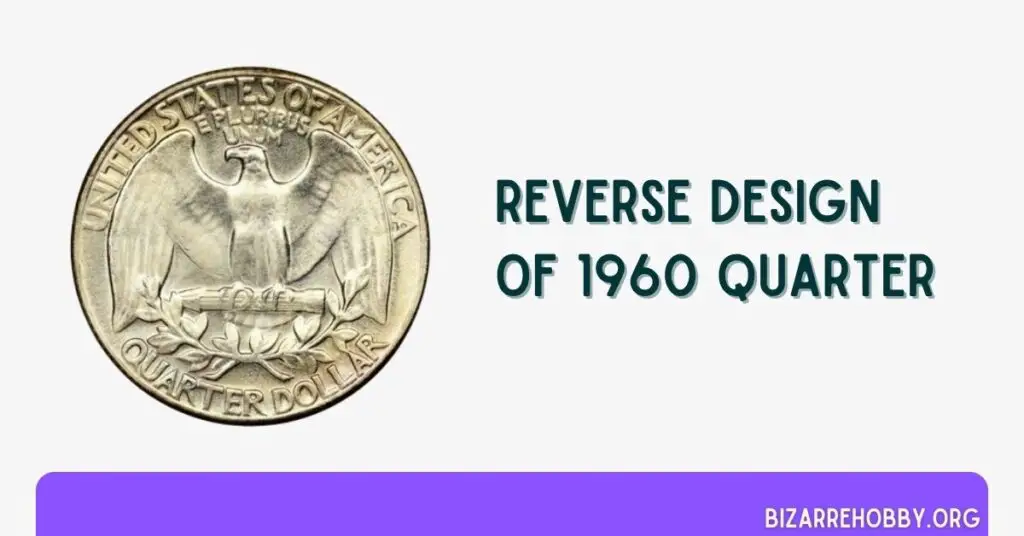
The reverse side of the 1960 quarter is rich with symbolic imagery that resonates with the values and history of the United States. At the center of the design is the national bird, the bald eagle, depicted with its wings spread wide, symbolizing strength and freedom.
The eagle stands on a bundle of thirteen arrows, which represent the original thirteen colonies and America’s readiness to defend its freedom if necessary. Below the eagle, a wreath made of olive branches serves as a symbol of peace, highlighting the nation’s desire for harmony in international relations.
Other notable features on the reverse include the mint mark, with a “D” indicating production in Denver, while coins from the Philadelphia Mint bear no mint mark. The denomination “QUARTER DOLLAR” is inscribed beneath the olive branches, and the phrases “UNITED STATES OF AMERICA” and “E PLURIBUS UNUM” are prominently displayed above the eagle’s head.
Technical Specifications of 1960 Quarter
| Type | Standard circulation coin |
| Face Value | Twenty-five cents ($0.25) |
| Shape | Round |
| Coin Diameter | 24.3 millimeters (0,95670 inches) |
| Compound | Silver-copper alloy |
| Coin Weight | 6.25 grams (0.20094 troy ounces) |
| Silver Weight | 5.623 grams (0.1808 troy ounces) |
| Edge | 119 reeds |
| Coin Thickness | 1.75 millimeters (0,06870 inches) |
1960 Washington Quarter Grading
The grading process for Washington quarters follows the same principles as for other coin types. Professional appraisers begin by verifying the coin’s minting date, identifying the presence of any mint marks, and noting any potential errors. Next, they assess the coin’s luster, color, overall preservation, and any visible imperfections.
Once these factors are evaluated, the coin is assigned a grade based on the Sheldon scale, which is a standard method used to determine a coin’s condition and value.
| Grade Number | Grade |
|---|---|
| 1 | Basal State-1 |
| 2 | Fair |
| 3 | Very Fair |
| 4, 5, 6 | Good |
| 7, 8, 10 | Very Good |
| 12, 15 | Fine |
| 20, 30 | Very Fine |
| 40 | Extremely Fine |
| 50 | About Uncirculated |
| 60 | Mint State |
| 65 | Mint State |
| 70 | Mint State |
For a more detailed understanding of how your coin might be graded, be sure to consult our Washington quarter grading guide. Accurately determining the grade is a crucial step in knowing the true value of your Washington quarter.
1960 Washington Quarter Value Guides
In 1960, the U.S. Mint produced a total of 93,855,926 Washington quarters. The majority of these coins were minted in Denver and are marked with the “D” mint mark. Meanwhile, the Philadelphia Mint issued two types of quarters: regular strikes and proof coins, both without a mint mark.
1960 Philadelphia Washington Quarter Value
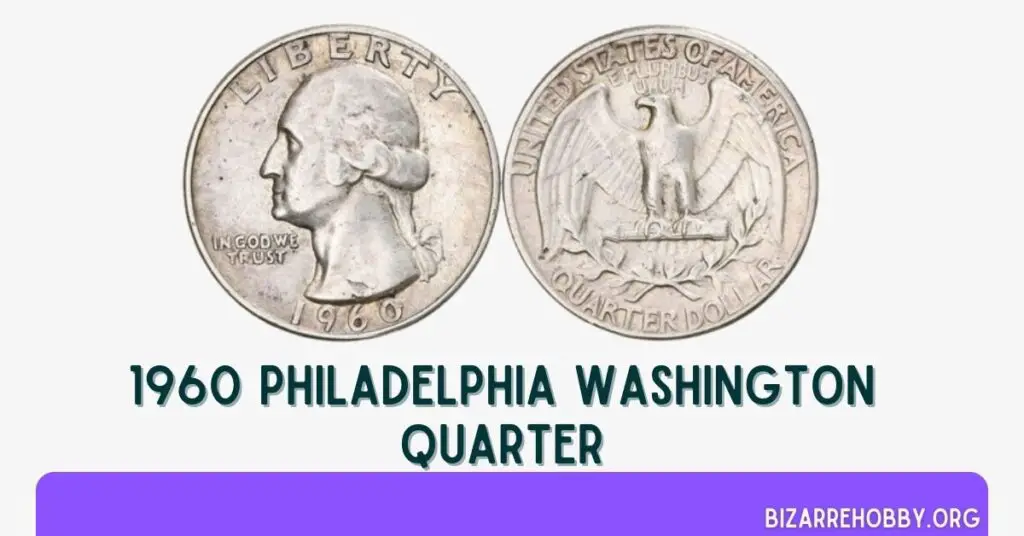
The Philadelphia Mint produced 29,164,000 Washington quarters in 1960. After over six decades, most of these coins, particularly those that have been in circulation, are valued at under $5. However, coins in lower-graded mint state conditions can fetch up to $8.
For quarters in higher grades, the value increases significantly. Coins graded MS 65 typically range from $12 to $30, while those in MS 66 can command between $35 and $65. The most sought-after examples are those graded MS 67, with values ranging from $400 to $900.
Exceptionally rare and well-preserved quarters can be worth much more. For instance, an MS 67+ Washington quarter from 1960 set an auction record in 2022, selling for an impressive $6,890.
1960 Proof Washington Quarter Value
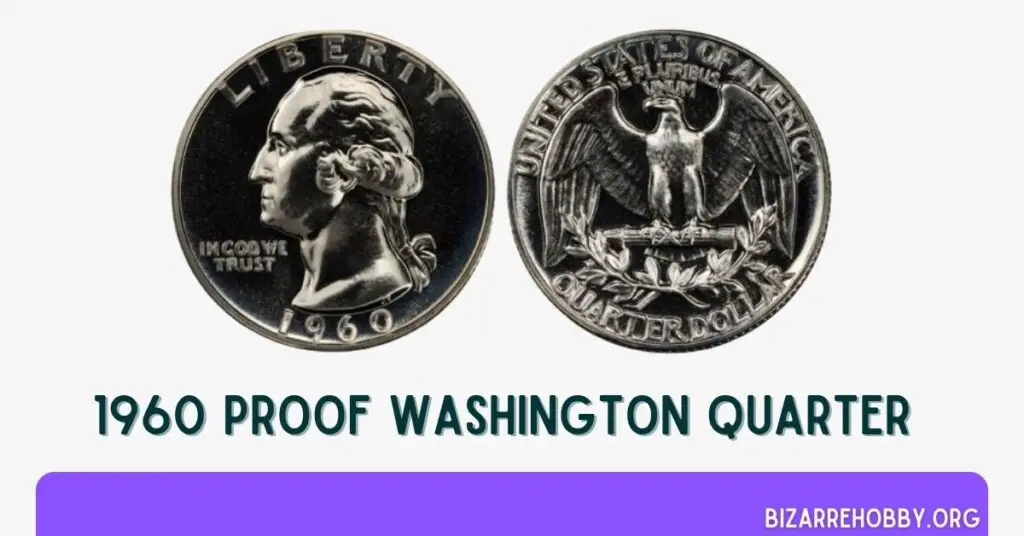
In addition to the regular strikes, the Philadelphia Mint produced 1,691,602 proof quarters in 1960. These coins, known for their enhanced luster and superior quality, were specifically made for collectors. Most proof quarters from this year are valued between $4 and $20, with coins in PR 69 condition estimated at around $165.
The highest-grade proof quarters, rated PR 70, can be quite valuable, with prices reaching approximately $750 each. However, some of the most desirable DCAM (Deep Cameo) proof quarters in PR 69 have sold for much higher. One notable sale occurred in 2013, where a PR 69 DCAM proof quarter fetched $2,174 at auction.
1960 D Washington Quarters Value
The Denver Mint achieved record production in 1960, minting 63,000,324 quarters featuring the “D” mint mark, located on the reverse beneath the wreath. Circulated coins from this batch generally cost less than $6, while those graded MS 60 to MS 66 are valued between $10 and $42.
The most pristine examples from this year, graded MS 67, are highly sought after, with values ranging from $1,600 to $2,500. The highest auction price for a 1960 D Washington quarter was $9,000, achieved at Heritage Auctions in 2019.
Rare 1960 Washington Quarter Errors List
The 1960 Washington quarter series has a variety of errors that can make these coins especially valuable to collectors. Some of these imperfections are unique to this series and can sometimes be spotted with the naked eye, though others may require a magnifying glass to detect.
1960 Quarter Die Crack Or Break Error

Die cracks or breaks occur when the die used to strike the coins develops fractures. These flaws result in quarters with raised lines or ridges on the coin’s surface. If the damage is near the edge of the die, parts of the design may break off, leading to more severe imperfections.
While minor die cracks might fetch around $15, more pronounced breaks can significantly increase the coin’s value, with prices ranging from $30 to $90.
1960 Quarter Re-Punched Mint Mark Error
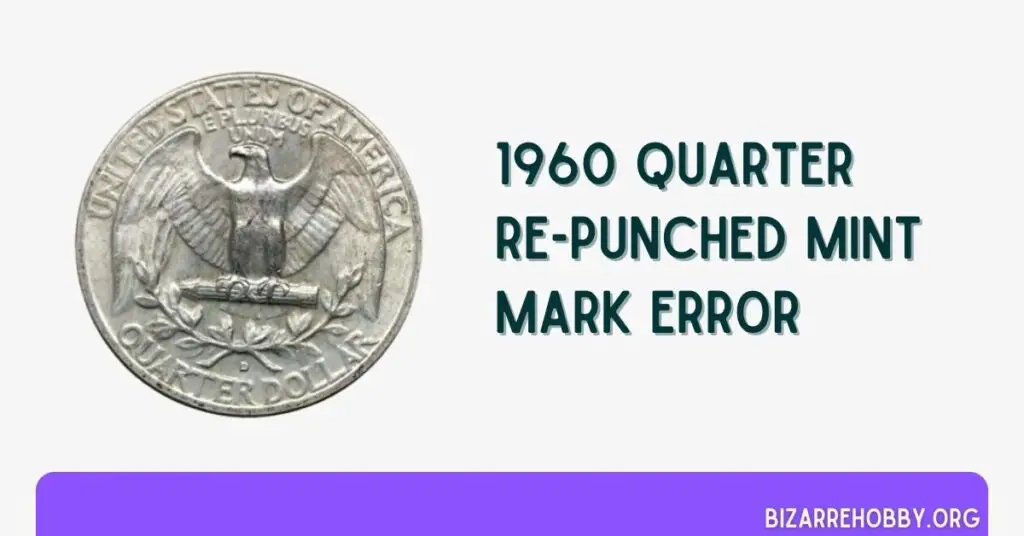
One of the most common errors found on the 1960 Washington quarter is the re-punched mint mark. This error occurred because, until the 1990s, mint marks were hand-punched, leading to occasional mistakes. You’ll find this error only on quarters minted in Denver, as Philadelphia quarters lack a mint mark.
The re-punched mint mark error happens when the “D” mint mark is struck twice on the same coin, creating a noticeable overlap. Coins with this error can be valued around $30.
1960 Quarter Doubled Die Reverse Error
The doubled die error happens when the date or lettering is struck twice on the hub, resulting in a doubled image on the coin. This error is often subtle, giving the lettering or date a blurred appearance. While many of these coins are valued at a few dozen dollars, a 1960 quarter with this error in PR 66 grade sold for $288 at an auction in 2011.
1960 Quarter Missed-Match Die (Type B Reverse) Error

This intriguing error involves a mismatch between the dies used on the obverse and reverse sides of the coin. Specifically, the obverse was struck with a regular die, while the reverse was struck with a proof die.
This mistake resulted in a unique variety known as the Type B Reverse. These coins are more valuable than standard quarters, with prices typically ranging from $15 to $20. However, in 2013, one such coin in MS 66 grade was sold for $200 on eBay.
1960 Quarter Off-Center Error
An off-center strike error occurs when the coin blank (planchet) is not properly aligned between the dies, causing the design to be struck off-center. The result is a coin with a crescent-shaped blank area where part of the design is missing. Most off-center 1960 quarters are only slightly misaligned, and they generally sell for $15 to $20.
1960 Quarter Clipped Planchet Error
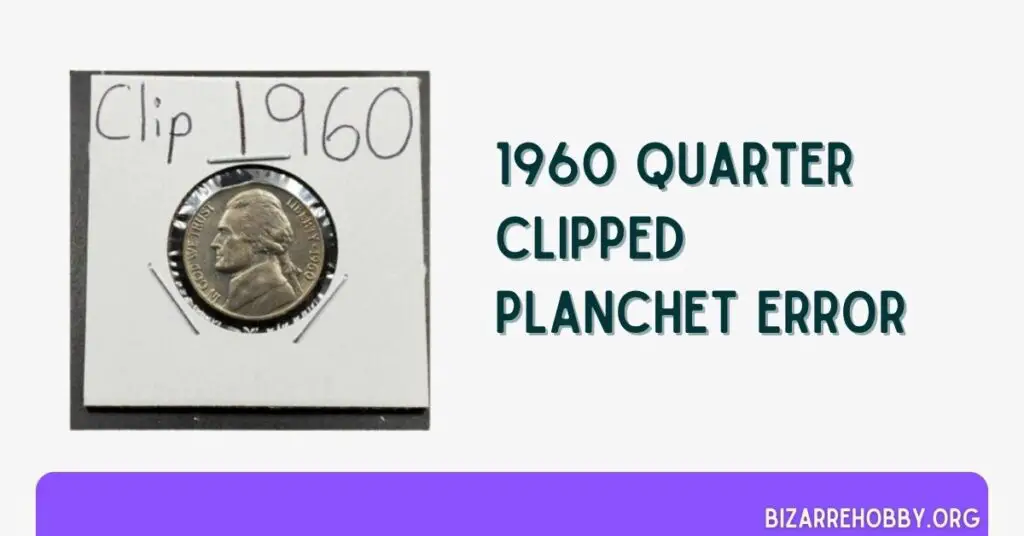
A clipped planchet error happens when the metal strip from which the blanks are punched is misfed into the blanking machine, causing a portion of the coin to be missing. This results in a curved clip on the coin’s edge, sometimes leading to a loss of design details. Coins with this error are typically valued at around $20.
1960 Quarter Lamination Error
Lamination errors are the result of impurities in the metal used to create the planchet. These impurities can cause the coin’s surface to peel, discolor, or even split. Such coins are relatively common and can be purchased for about $15.
Other 1960 Quarter Errors
Occasionally, you may encounter 1960 Washington quarters with other minor imperfections that slightly affect their value. These include:
- Folded planchet
- Broad strike
- Weak strike
Where to Sell Your 1960 Washington Quarter?
If you’ve discovered a valuable 1960 quarter in your collection, you might be wondering about the best places to sell it. Here are some popular options:
- Online Marketplaces: Platforms like eBay and Etsy offer wide exposure to potential buyers. However, be prepared to handle shipping and potential customer service issues.
- Coin Dealers: Local coin shops or online dealers specializing in numismatics can offer quick sales, though possibly at slightly lower prices than you might get selling directly to collectors.
- Auction Houses: For particularly rare or valuable specimens, specialized numismatic auction houses can help you reach serious collectors willing to pay premium prices.
- Coin Shows: These events provide opportunities to meet dealers and collectors face-to-face, potentially securing better prices for your coins.
- Online Coin Forums: Websites like Coin Community and Coin Talk have marketplace sections where you can list your coins for sale to a dedicated numismatic audience.
Remember to research current market values, consider getting valuable coins certified by a reputable grading service, and always prioritize secure shipping methods when selling coins online.
Which 1960 Washington quarter is worth a lot of money?
Several 1960 Washington quarters have fetched significant sums at auctions. Here are some of the most notable sales:
- A 1960 D Washington quarter in MS 67 grade achieved an auction record of $9,000 on June 9, 2019, at Heritage Auctions.
- A 1960 Washington quarter in MS 67+ grade was sold for $6,890 on March 7, 2022, on eBay.
- A 1960 Washington quarter (DCAM) in PR 69 grade fetched $2,174 on April 24, 2013, at Heritage Auctions.
- A 1960 Washington quarter in PR 69 grade secured $550 on June 9, 2021, on eBay.
- A 1960 Washington quarter (DDR) in PR 66 grade reached $288 on September 13, 2011, at Stack’s Bowers.
- A 1960 Washington quarter (CAM) in PR 69 grade sold for $204 on May 15, 2019, at Heritage Auctions.
- A 1960 Washington quarter (Type B Reverse) in MS 66 grade was sold for $200 on December 31, 2013, on eBay.
These auction records highlight the potential value of well-preserved 1960 Washington quarters, particularly those with unique errors or high grades.
FAQs on 1960 Washington Quarter
How much is the 1960 No Mint Mark Washington quarter worth?
The value of a 1960 Washington quarter without a mint mark varies based on its condition. In circulated condition, its generally worth less than $5. In lower grades (below MS 65), it can cost up to $8.
And for higher grades (MS 65 and above), it is estimated between $12 and $480, depending on the quality of the coin.
What makes a 1960 Washington quarter So rare?
Despite their high mintage, 1960 Washington quarters are considered moderately rare due to their age. The rarity primarily lies in the condition of the coin. Quarters in Gem condition (highly graded and well-preserved) are particularly rare and sought after, making them stand out among the mid-range rarities.
Final Thoughts
In summary, the 1960 Washington quarter holds a unique place in numismatic history, with its value influenced by factors such as mint mark, condition, and errors. While most quarters from this year are moderately common due to high mintage, those with notable errors or in exceptional condition can be quite valuable.
Quarters from Denver with the “D” mint mark and those lacking a mint mark from Philadelphia offer diverse value ranges, depending on their preservation and rarity. Collectors should pay close attention to error types and coin grades to fully appreciate the potential worth of their 1960 Washington quarters.
Whether you’re a seasoned collector or a newcomer, understanding these nuances will enhance your appreciation and possibly uncover valuable treasures in your collection.
